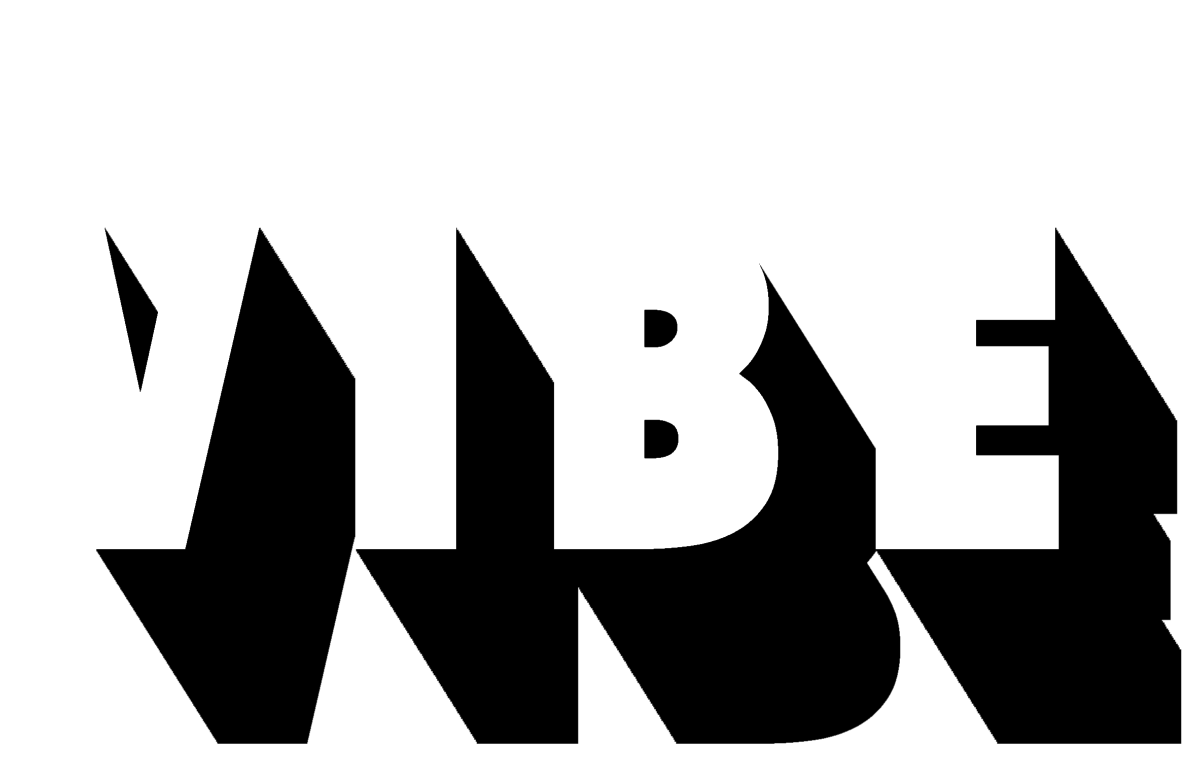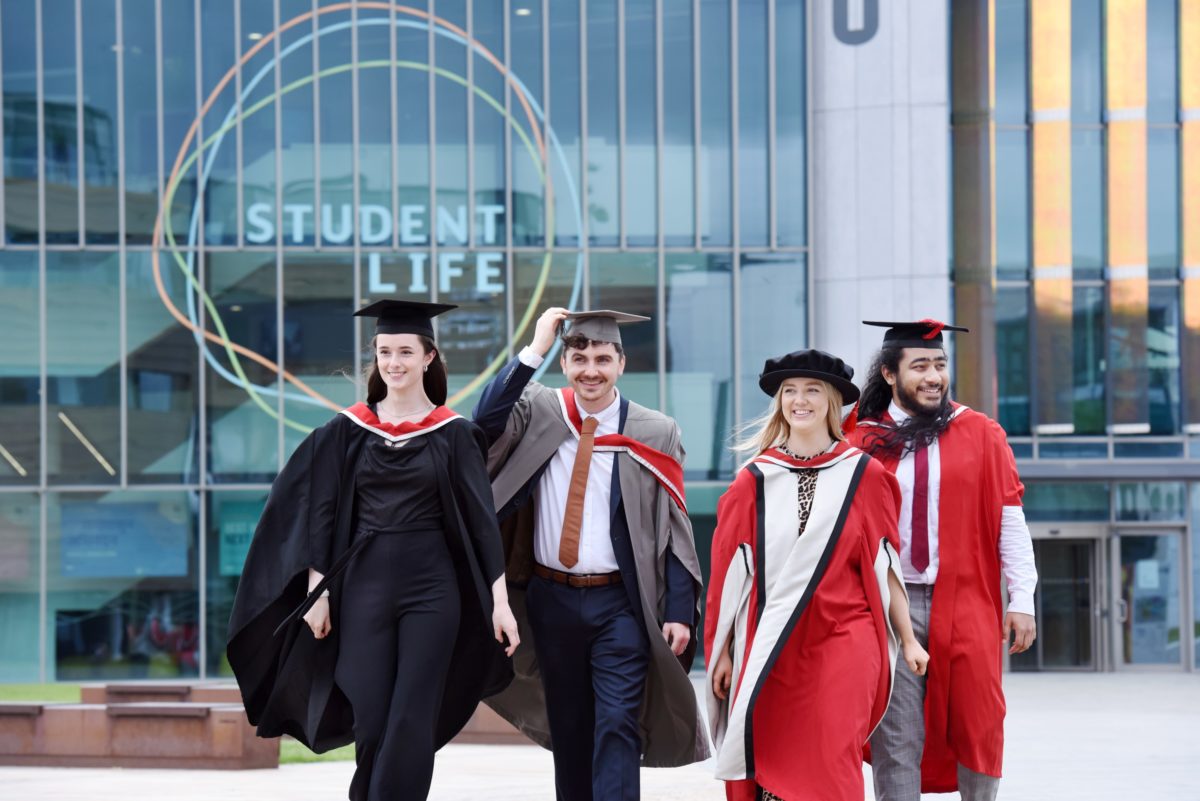By Julian Lawrence, Senior Lecturer Comics and Graphic Novels at Teesside University.
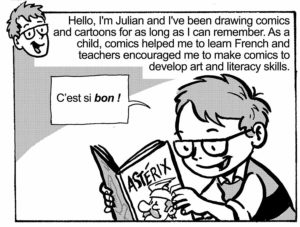
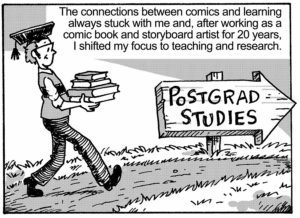

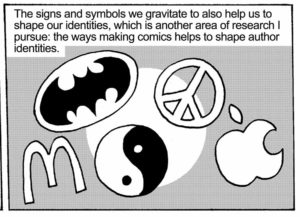

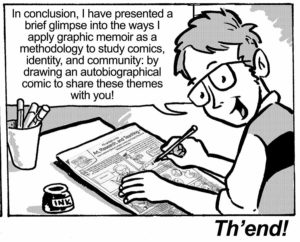
PANEL 1
Hello, I’m Julian and I’ve been drawing comics and cartoons for as long as I can remember. As a child, comics helped me to learn French and teachers encouraged me to make comics to develop art and literacy skills.
JULIAN: C’est si bon !
PANEL 2
The connections between comics and learning always stuck with me and, after working as a comic book and storyboard artist for 20 years, I shifted my focus to teaching and research.
PANEL 3
While working on my Master’s in Art Education I became fascinated with semiotics: the study of signs and symbols. Umberto Eco says: “Semiotics is a general theory of all existing languages… all forms of communication – visual, tactile, and so on….” I investigate the signs in comics which help authors tell stories.
PANEL 4
The signs and symbols we gravitate to also help us to shape our identities, which is another area of research I pursue: the ways making comics helps to shape author identities.
PANEL 5
In classrooms, comics perform as a participatory culture; it is a medium that supports negotiations of identity within communities of practice. Studying semiotics and authorship steered me towards autobiographical comics and utilising graphic memoir as a research methodology.
Julian: It’s so interesting to see that the characters students create are actually representations of themselves!
PANEL 6
In conclusion, I have offered you a brief glimpse into the ways I apply graphic memoir as a methodology to study comics, identity, and community: by drawing an autobiographical comic to share these themes with you!
